Star Trek: Voyager Series Ending Explained - How The Crew Gets Home
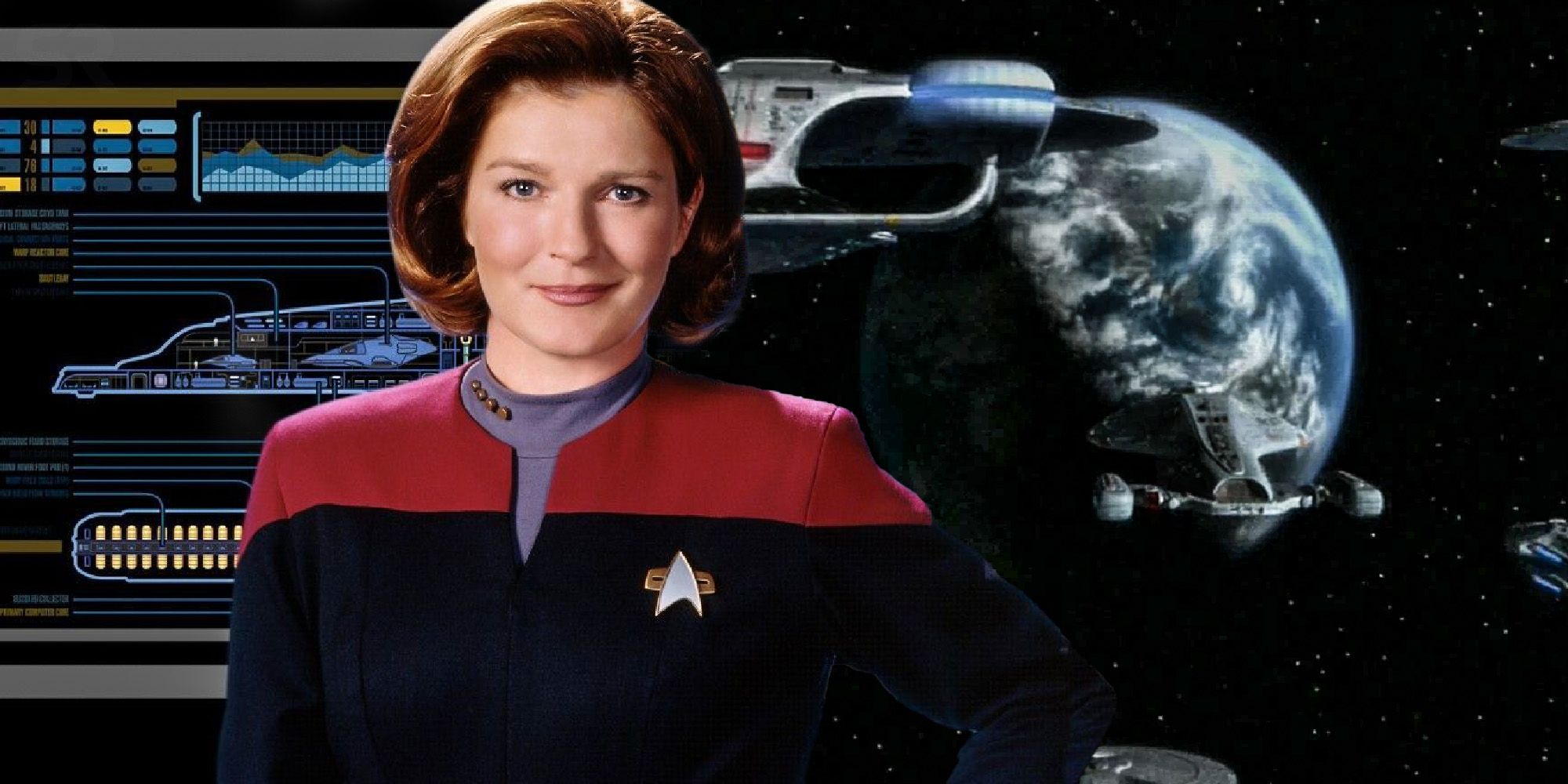
Star Trek: Voyager ran for seven seasons before delivering its last episode, "Endgame" as a two-part special on May 23rd, 2001, making for an ending that saw the crew get home and encompassed many of the show's core themes. Voyager tells the story of the crew of the USS Voyager under the command of Captain Kathryn Janeway, and their journey to find their way back to the Alpha Quadrant after they are accidentally thrown into the Delta Quadrant, 70,000 lightyears from their home.
This premise offers a unique perspective on the Star Trek universe, allowing the show to introduce both unexplored sci-fi concepts and new alien races on a much larger scale than other shows in the franchise had been able to do. The crew must also learn how to live and work together, as a number of them are former Maquis, members of an anti-Federation resistance force who Voyager was sent to track down. Through the seven seasons, the crew of the ship goes from wary allies to a cohesive team and, finally, to a family, as close relationships form, and bonds are forged by being so far away from home.
Not all the challenges the crew faced were foreign, however. One of the biggest enemies dealt with in later seasons was the Borg, the famous cybernetically enhanced hive-mind race that had been terrorizing the crews of various Star Trek shows since The Next Generation. The Borg play a significant role in over half of the show's run, especially with the addition of Seven of Nine, a former Borg drone rescued by the crew. Another common Star Trek plot device that showed up during Voyager's run was the idea of time travel. The Borg and the concept of time travel serve as the main plot drivers for "Endgame", and are ultimately the two reasons the crew are able to accomplish what they have been attempting to do all series: get home.
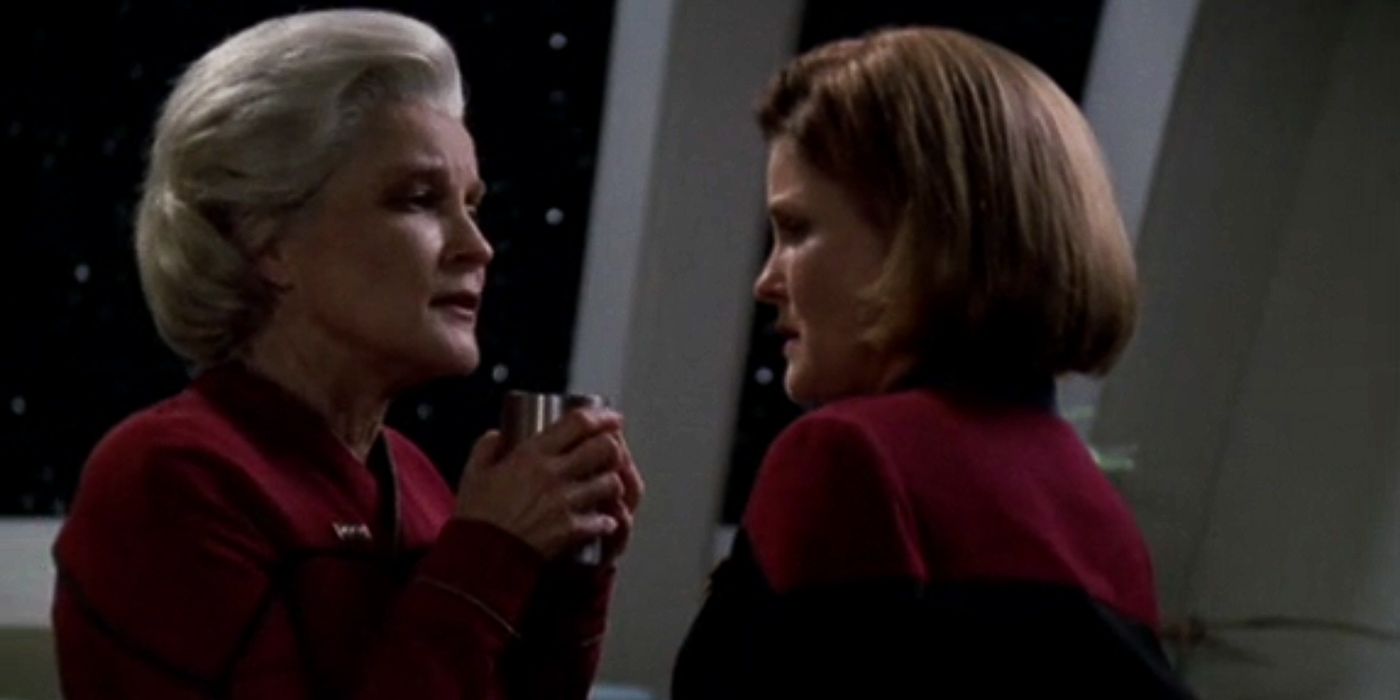
"Endgame" begins 26 years in the future, a future where Voyager and her crew have made it home, although not without consequences. These consequences weigh heavily on the conscience of the now Admiral Kathryn Janeway, who decides to use a device called a chrono deflector stolen from a Klingon named Korath to create a temporal wormhole and return to the year 2378. She finds Voyager and convinces her younger self, the still-Captain Janeway, and her crew that she can help them get home. She directs them back to a network of wormholes in a nebula they originally avoided because of a massive Borg presence and provides them with technology including shipwide armor and transphasic torpedos, to protect against Borg attack. The crew adapts the technology to the ship and makes their way back to the nebula, only to find that the wormholes are part of a massive transwarp hub that if destroyed will deal a crippling blow to the Borg. Destroying it, however, will mean the crew will lose their chance of getting home. The Borg Queen communicates to Seven of Nine that, if Voyager attempts to use or destroy the hub, she will retaliate with deadly force.
Captain Janeway is furious with her older self for not telling her about the hub, and the two argue about the right thing to do before Admiral Janeway breaks her promise to not tell Captain Janeway anything about the future, and informs her of the horrors that will be wrought on her crew if the Captain does not take this opportunity; Tuvok will become mentally unstable, unable to get the cure in time for the neurological disease he has begun to suffer from. Seven of Nine will die on an away mission in the Delta Quadrant and her husband Chakotay will be so grief-stricken that he will never recover and die sometime later of an implied broken heart after Voyager gets home.
Shaken by this news, Captain Janeway tells her crew that they won't go through with the plan to destroy the hub unless everyone agrees to do it, but the crew agrees despite the risks. Touched by the crew's loyalty and love of each other, Admiral Janeway admits she was wrong for lying about the hub and agrees to help. Captain Janeway convinces her that there is a way to both destroy the hub and get Voyager home. While the Admiral distracts the Borg Queen, Voyager enters the hub and sets its destruction in motion, riding the shockwave from the explosions along a conduit the Alpha Quadrant. At the last minute, and ship is pursued by a Borg Sphere but is able to take on the Sphere and destroy it once they reach the Alpha Quadrant. The last shot of Star Trek: Voyager is the titular vessel triumphantly flying towards Earth, surrounded by Federation ships.
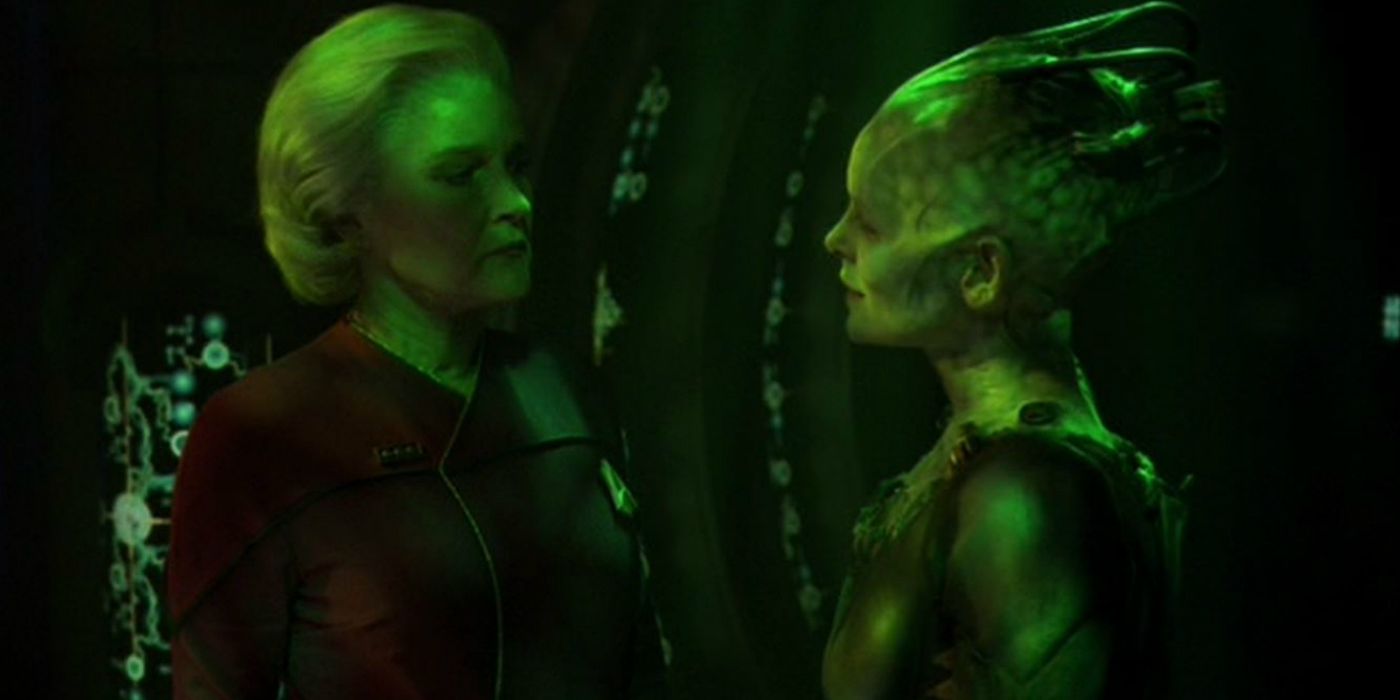
Getting Voyager home relies entirely on the Janeways' plan to trick the Borg Queen in the Star Trek: Voyager series finale. This hinges on Admiral Janeway pulling off some sleight of hand. When the Admiral first appears to the Borg Queen, it seems as though she had turned on the Voyager crew again. Talking to the Queen in her mind using a device that allows her to pilot her ship via a neural link, the Admiral insists that she will give the Queen the information on how to stop Voyager from destroying the hub if the Queen will send a Borg ship to tow Voyager safely home. The Queen agrees to help but then turns on Admiral Janeway once she has found the physical location of her shuttle and body. She begins to assimilate Janeway, and it seems as though the Admiral has been outsmarted, until it is revealed that before leaving Voyager, she was deliberately infected with a neurolytic pathogen that begins to work on the Queen immediately, severing her connection from the rest of the collective and beginning to destroy her body as well.
Without their Queen, the Borg have no guidance, and Voyager is able to carry out its mission to destroy the hub. The Queen makes one last valiant stand by sending the last ship at her disposal after Voyager, but by a trick of flying, Voyager manages to fly inside of the ship, ride in it the rest of the way through the transwarp conduit to the Alpha Quadrant, and then detonate the ship from the inside out. Once the ship is destroyed, they fly out to meet the Federation ships waiting for them.
Because of the pathogen, The Unicomplex housing the Queen explodes, killing her and Admiral Janeway. The Borg Queen is defiant to the last, convinced that the ship she sent after Voyager will destroy Captain Janeway and crew and that Admiral Janeway will cease to exist as a result. Voyager destroys the ship, however, and in the end, the Queen is only right in her prediction that Admiral Janeway will also cease to exist. Admiral Janeway chooses the fate of assimilation and certain death, knowing that if the plan works, she will die anyway since the future will be rewritten by her actions. She has known this from the beginning of the episode, telling the future Harry Kim that she is aware her mission is a "one-way trip"
.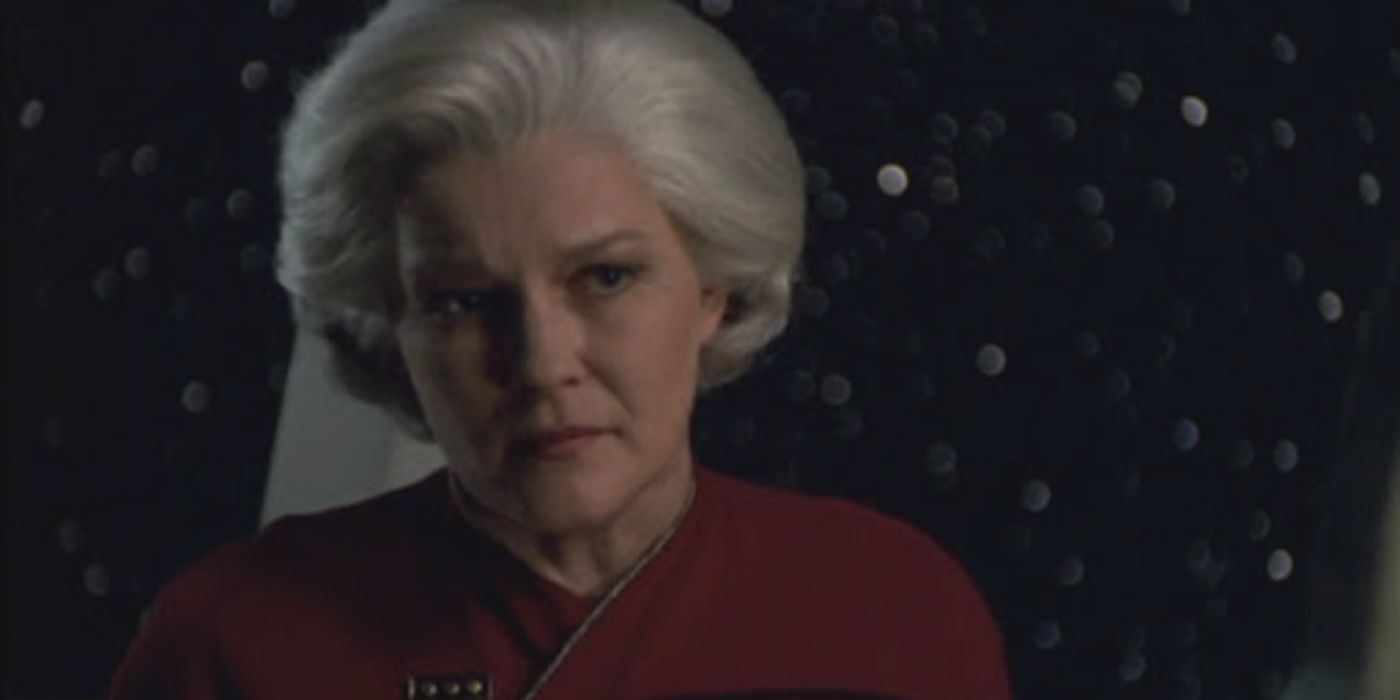
As previously stated, time travel plays a big role in Star Trek: Voyager. In fact, there is even a precedent for a member of the crew coming back from the future to prevent dire events from happening to the crew. The season 5 episode "Timeless" deals with a future Harry Kim and Chakotay attempting to get a message back in time from a bleak future where the rest of the Voyager crew was killed in an accident while trying to get home. They ultimately stop the crew from attempting the maneuver, and rewrite the future, just as Admiral Janeway does in "Endgame". Besides "Timeless", there are a number of important episodes that deal with time travel, such as "Future's End", "Year of Hell", and "Relativity".
The fact that time travel is a well-used plot device does not take away from how jarring it is to set "Endgame" 26 years in a future that the audience knows nothing about. From the beginning, it is a shock to see the ship safe on Earth, and the crew aged and moved on with their lives. The jump to the future is used not only as a means to a narrative end, but as a way to shock and draw in the audience to the rest of the story.
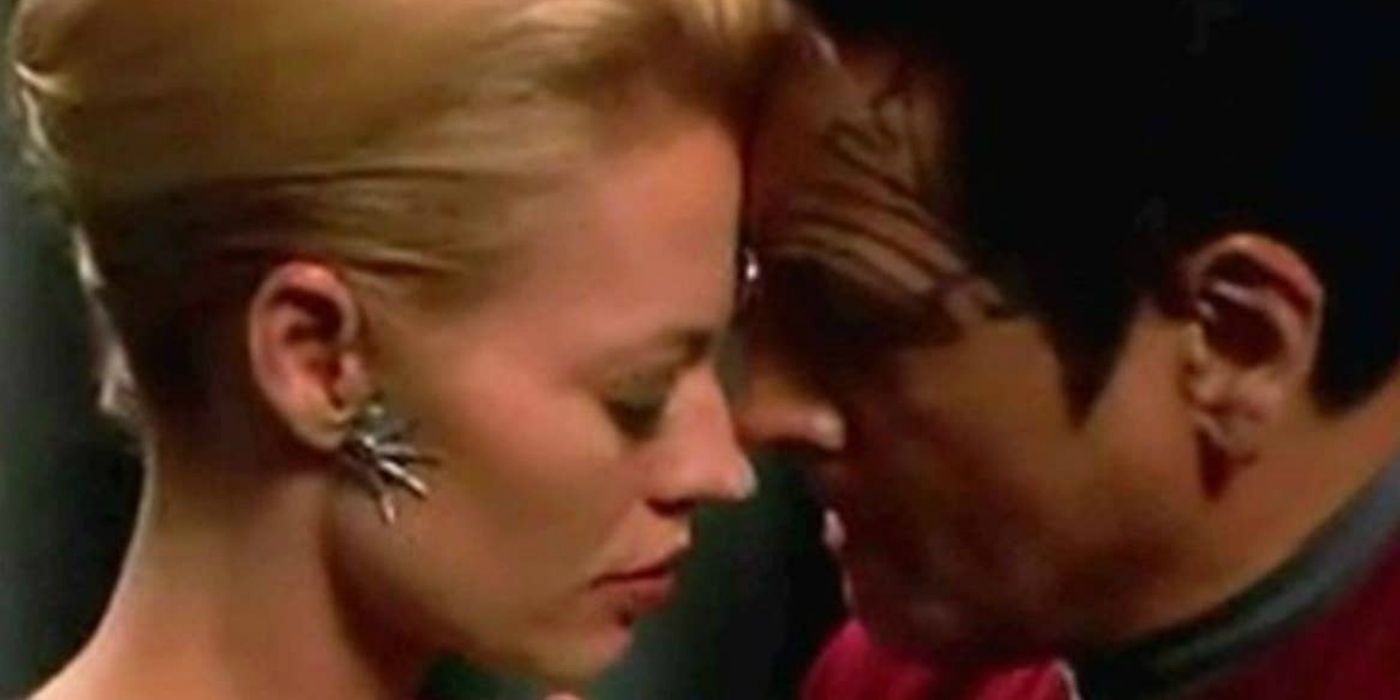
While the relationship between Seven of Nine and Chakotay had been evolving into something more intimate over the last eight episodes of Star Trek: Voyager's final season, it is not until "Endgame" that audiences see it reach its fullest potential. It is revealed early on in the episode that the two have begun dating in earnest, and they are shown to become closer throughout the episode, sharing their first kiss and several tender moments as the plot progresses. The biggest plot twist is the reveal that the two were married in Admiral Janeway's timeline, proving that their nascent relationship has the potential to become something more serious.
Seven of Nine and Chakotay's relationship was a surprise to many fans, as it had only been set up to be romantic late in the season. The fact that they seem to be in it for the long haul by the end of the final episode is a twist that fans would have been hard-pressed to see coming. Similarly, their deaths in the future serve to shock the audience and make Admiral Janeway's motivation for getting the crew home sooner even more clear.
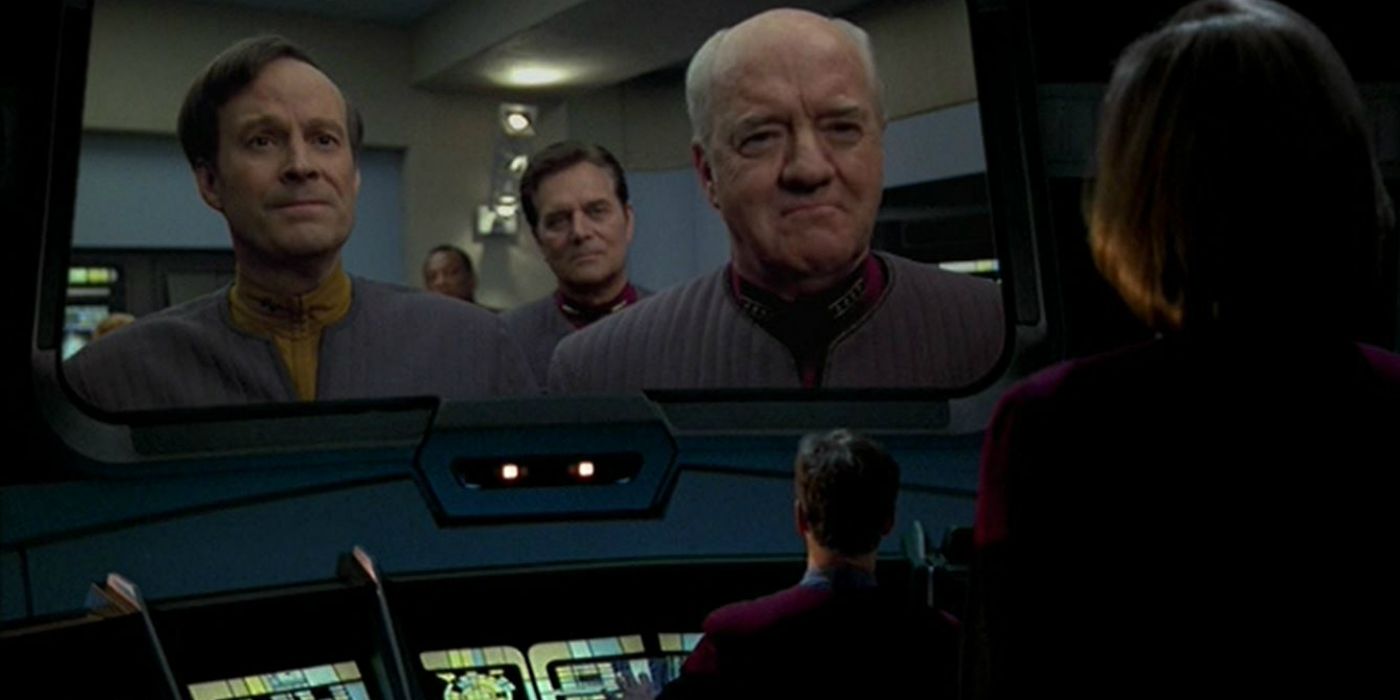
Voyager, more than any other Star Trek series, is at its core about a family, something that is no better demonstrated than in the case of main characters Tom Paris and B'Elanna Torres. Tom and B'Elanna start off as grudging allies who are reluctant to work together. By the end of the final season though, the two are married and expecting a child, a baby girl born in the final moments of "Endgame". Family, particularly a family of choice, is a core theme throughout Voyager and something that makes the show special to fans, the close character relationships serving as the driving force that makes the plot more engaging.
It really is no surprise then that love for her Voyager family is what makes Admiral Janeway do what she does in "Endgame", or that it is the thing that convinces her in the end that there is a way to both destroy the hub and get Voyager home. Much of "Endgame" is centered on the relationships between the crew; the love they have developed for each other over the years is palpable throughout the episode. Likewise, whether it is Tom and B'Elanna's happy marriage, or Seven and Chakotay's budding romance, Star Trek: Voyager's "Endgame" makes the point that this love, this family, is going to last, even after the show is over.
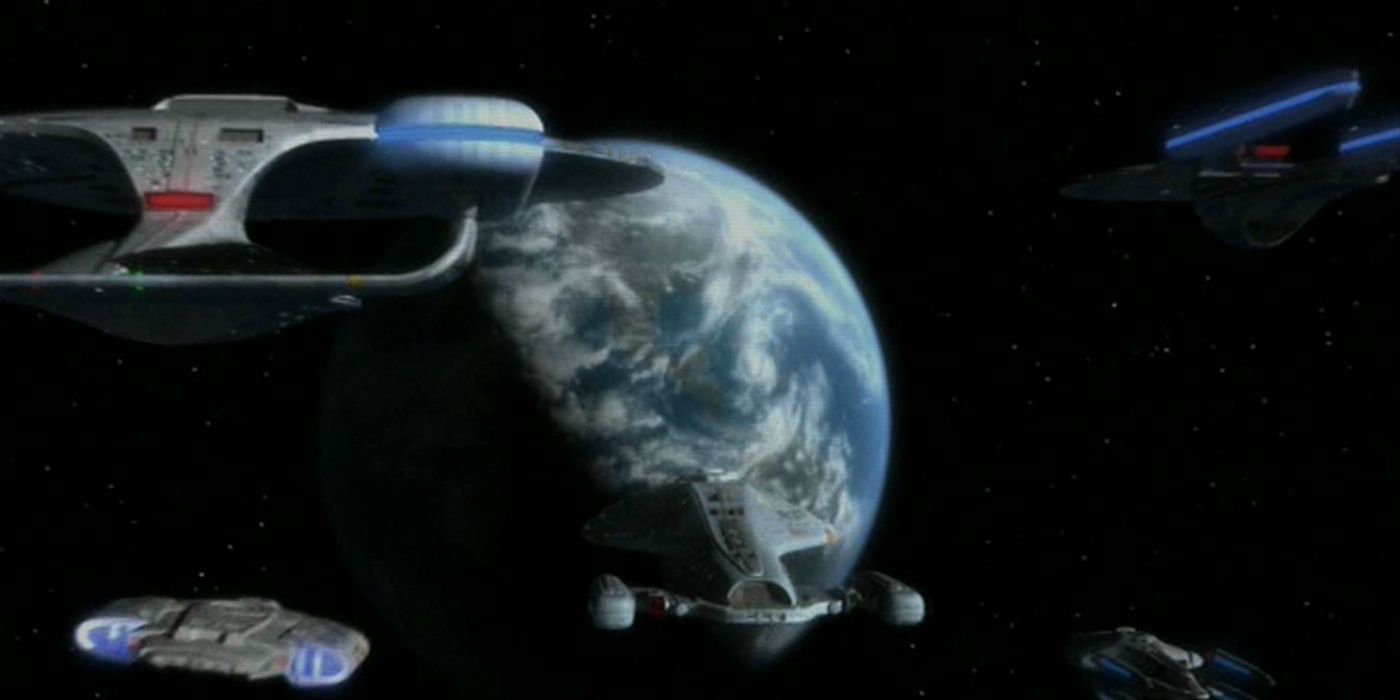
Throughout Star Trek: Voyager's run, it was never made explicitly clear that the crew would be making it home. Even up until the last five minutes of the episode, it was unclear whether or not the crew's plan would come to fruition. The creative team behind the show could have made the choice to end "Endgame" with the ship in the Delta Quadrant, with their fates uncertain. Instead, "Endgame" makes it clear once again that not only does every single member of the Voyager crew deserve to survive, but that their ability seven years ago to put aside their differences, work together, and ultimately come to love each other like family is the singular thing that helped them accomplish their goal. "Endgame" proves that love really does conquer all, and that, in the words of Harry Kim, "Maybe it's not the destination that matters. Maybe it's the journey."
from ScreenRant - Feed https://ift.tt/35vjwMA
No comments